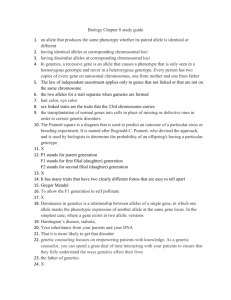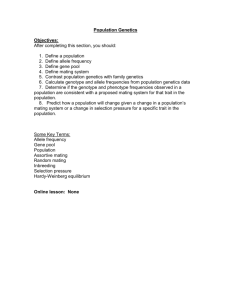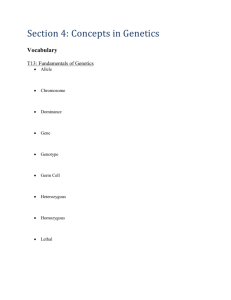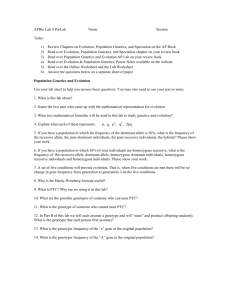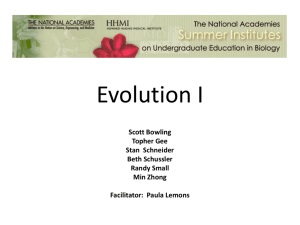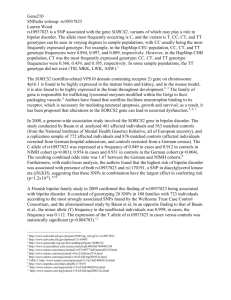Molecular Biology book, Chapter 3
advertisement
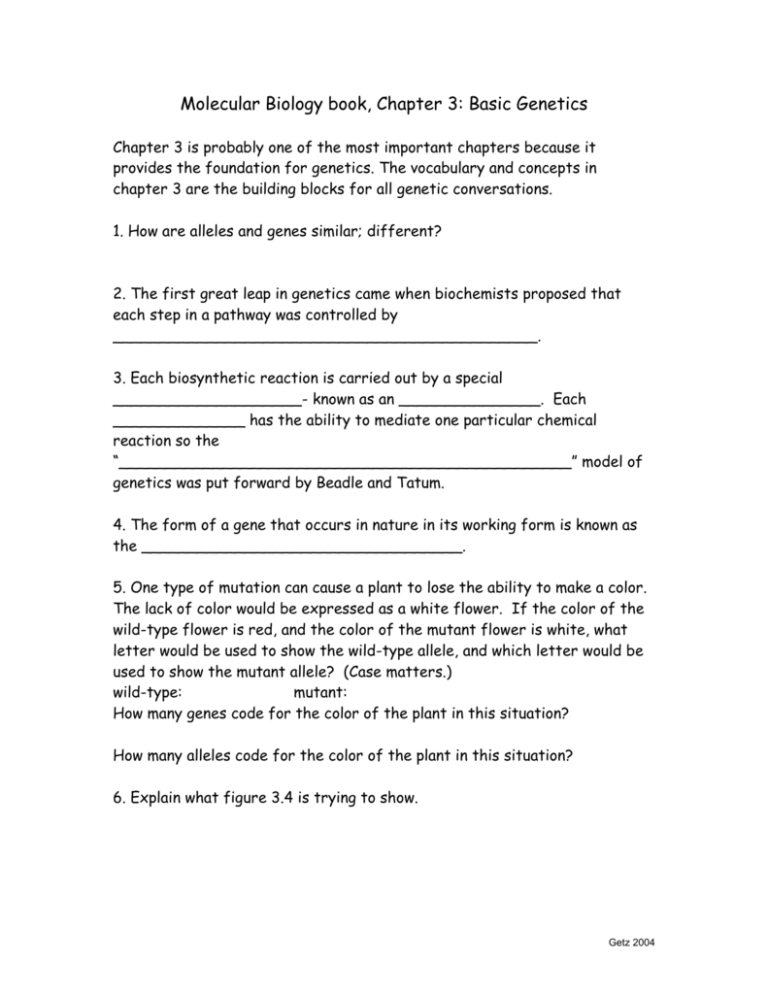
Molecular Biology book, Chapter 3: Basic Genetics Chapter 3 is probably one of the most important chapters because it provides the foundation for genetics. The vocabulary and concepts in chapter 3 are the building blocks for all genetic conversations. 1. How are alleles and genes similar; different? 2. The first great leap in genetics came when biochemists proposed that each step in a pathway was controlled by _____________________________________________. 3. Each biosynthetic reaction is carried out by a special ____________________- known as an _______________. Each ______________ has the ability to mediate one particular chemical reaction so the “________________________________________________” model of genetics was put forward by Beadle and Tatum. 4. The form of a gene that occurs in nature in its working form is known as the __________________________________. 5. One type of mutation can cause a plant to lose the ability to make a color. The lack of color would be expressed as a white flower. If the color of the wild-type flower is red, and the color of the mutant flower is white, what letter would be used to show the wild-type allele, and which letter would be used to show the mutant allele? (Case matters.) wild-type: mutant: How many genes code for the color of the plant in this situation? How many alleles code for the color of the plant in this situation? 6. Explain what figure 3.4 is trying to show. Getz 2004 7. Saying that the genetic make-up of the plant is Rr would be telling its (genotype/ phenotype.) (circle one) 8. Saying that the plant is red would be telling its (genotype/phenotype.) (circle one) 9. What is bigger, a gene or a chromosome? 10. What is a gene made of? 11. If an organism has only 1 copy of a gene, its genome is known as being _____________________. 12. Humans have 2 copies of each gene in their cells. Our genomes are known as being _____________________. 13. If you have a genotype that is Rr, where RR gives red flowers and rr gives white flowers, and if the color of the Rr flower is red, what can be said about the R allele? 14. In question 13, the r allele is known as being what? 15. RR or rr genotypes are known as being (heterozygous/ homozygous.) (circle one) 16. Rr or rR genotypes are known as being (heterozygous/ homozygous.) (circle one) 17. Reproductive cells are also known as gametes or __________________ cells. (This is a very important term, even though it is not in pink.) 18. All of the other cells that make up the body are known as ____________________ cells. (Soma means body.) 19. All somatic cells in the body are _________________ which means they have ______________ copies of all chromosomes; however egg and sperm cells are ____________________ which means they have __________________ copy of all chromosomes. 20. What is the point of meiosis? 21. The first generation of offspring are labeled as ______________. Note, the parents are not given an F designation, just the generations after the parents are. Please don’t let this confuse you. 22. If you cross a RR parent with a rr parent, what genotype do you get in the first generation? 23. If you take two siblings of the first generation (you can legally do this with plants), and cross them, what genotypes are you likely to get? 24. What percent of the flowers in question 23 will be red and what percent will be white? (assuming that R is a dominant allele for red flower color) 25. Why can two brown eyed people give birth to a child with blue eyes? 26. What does it mean when “they” say, “That trait skips a generation.” 28. Who determines the gender of the offspring, the mom or the dad? 29. With humans, what is the probability of a heterosexual couple having a boy baby? A girl baby? 30. The __________________________ two genes are on the chromosome, the more likely a crossover will form between them and the ________________ will be their frequency of recombination. 31. Why is estimating the distance between genes important?



